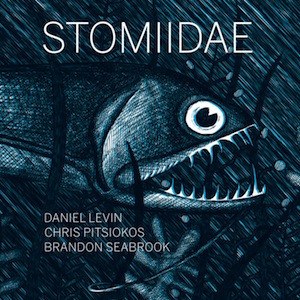Label: Self produced, 2018
Personnel - Meg Okura: violin, vocals, erhu; Tom Harrell: trumpet; Sam Newsome: soprano sax; Sam Sadigursky: bass clarinet, clarinet; Anne Drummond: flutes; Riza Printup: harp; Rez Abbasi: guitar; Brian Marsella: piano, electric piano; Pablo Aslan: bass; Jared Schonig: drums.
Japanese violinist Meg Okura records for the fourth time with her Pan-Asian Chamber Ensemble, this time having first-rate improvisers Rez Abbasi and Tom Harrell in the roster, guitarist and trumpeter, respectively. Containing seven original compositions, the album Ima Ima put on view her lucid musical vision as she explores material across the world-fusion spectrum. Thus, it’s more than common to hear timeless Eastern melodies running over contemporary jazz arrangements.
“Black Rain” is one of those cases, with the Japanese pentatonic scale integrating so well with the harmonic progression of the jazz classic “Invitation”. The inaugural Oriental enchantment that stems from violin, harp, and soprano, suddenly mutates to a bolero cadence that serves the individuality of pianist Brian Marsella.
“Ima”, meaning mom in Hebrew and now in Japanese, is a phenomenal opening. The beautiful piano/flute and harp/soprano combinations create cinematic tension throughout the introductory section, which is subsequently deviated to a waltzing route varnished with sporadic swinging segments. Sopranist Sam Newsome energizes his impromptu statement with literate swoops and rhythmic focus.
Brimming contemporary vibes, “A Summer in Jerusalem” displays Israeli sounds through the self-disciplined combination of Okura’s violin and Pablo Aslan’s bowed bass. Sam Sadigursky makes you tap your feet to the cadence by wielding a powerful deep-toned groove in seven. This steams up polychromatic keyboard attacks and punchy rhythmic accents that emerge from Jared Schonig’s roiling drumming. A chamber passage, vaguely resembling “Concierto de Aranjuez”, jumps at us before the discerning improvisations from Harrell, Abbasi, and Okura, who also colors with her vocal chants. Everything is so gentle and exciting at the same time. The complex structure still encompasses a vamp that brings back the trumpeter and the violinist to the spotlight before the reinstatement of that rousing, groovy theme.
“A Night Insomnia” is a sophisticated fusion feast. The band keeps groovin’ aplomb while embarking on a journey replete with smooth soul, funk, and ever-shifting rhythms that are constantly disrupted, just like the eight note figure that accompanies the song throughout. The violinist employs swift patterns and phrases to leap between registers, whereas Harrell swings and funks with a clever choice of notes. You’ll also hear improvisations from flute, bass clarinet, and soprano sax at the very end.
Reflective strings and woodwinds bring “Birth of Shakyamuni” to life. Sandwiched by moments of contrapuntal ostinato, Abbasi speeds up a concise yet highly articulated solo à-la Larry Coryell, contrasting with Sadigursky, whose tranquil melodies lead to a classy tango passage turned classical epic. The guitarist returns afterward for another supersonic intervention before a compelling flute incursion.
With the bandleader’s classically trained voice in evidence, “Blues in Jade” seems to explore the incorporeal. Conversely, “Tomiya” feels gleefully secular as it recreates the rhythm of a taiko drum ensemble. Elements of Japanese folk merge with jazz harmonies, shaping a gracious chamber jazz that lands on an uplifting Latinized vamp dominated by Harrell’s soloing aptitude.
Ms. Okura was able to create magical crossover soundscapes with intimacy and subtlety, resorting to a pure lyricism and fascinating collective passages that never put the homogeneity of the whole into question.
Grade A-
Favorite Tracks:
01 – Ima ► 02 – A Night Insomnia ► 03 – A Night Insomnia








































